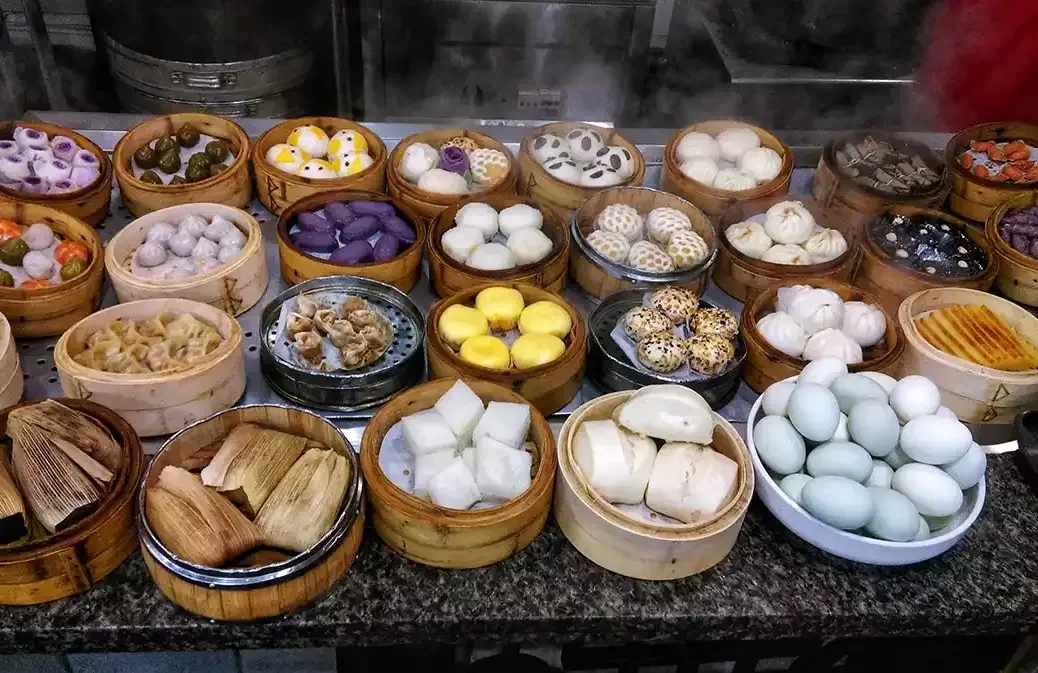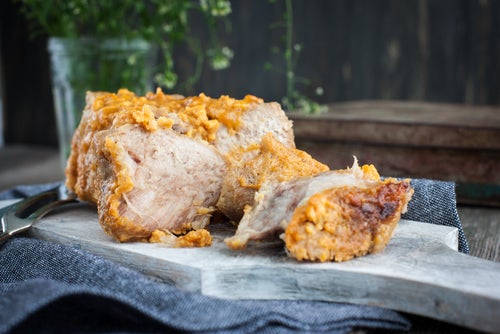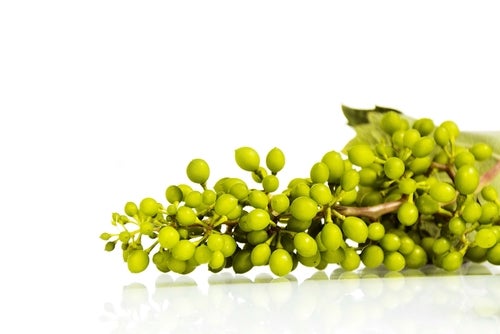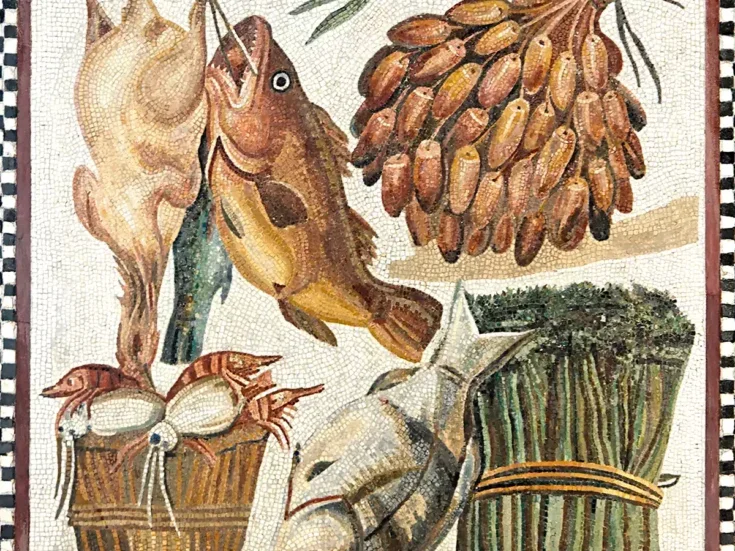
Stuart Walton reviews China in Seven Banquets: A Flavourful History by Thomas David DuBois.
China’s culinary past has kept Western food historians mightily occupied over the past half-century. Much as the country’s complex chronicle of internal conflict and its shifting dynastic eras, from prehistory to post-Mao, continue to exert a fascination to the world at large, so the patterns of necessitous resourcefulness and open assimilation that have structured its food traditions have generated their own burgeoning library, even while various invented versions of those traditions made themselves at home in cultural enclaves throughout the Western world.
The world beyond China’s borders, securely repelled for centuries by a puritanical imperial insularity, came crashing violently in during the colonialist 19th century and has been enthusiastically permitted controlled access to one of the world’s most bullish consumer markets in the epoch initiated by the economic reforms of Deng Xiaoping in the 1980s. While European and North American food writers began to pride themselves on knowing the differences between China’s regional cuisines, the result within China has been a self-conscious expansion of gastronomic pride, hardly more tangible than among the growing claque of foreign tourists to Beijing, prepared to pay handsomely at street stalls in the night market along Wangfujing Street for a taste of something that is at least a few heartbeats nearer to real China, ancestral China, than the illustrated menus of the local China Garden back home.
Into this breach steps Thomas David DuBois, an American professor at the Folk Culture Research Center of Beijing Normal University, prolific author of works on Chinese history and religion, and longtime resident. Rather than attempt another fossil history of the country’s agriculture, or of the predilections of one emperor or another, DuBois takes a programmatic approach, offering a magic-lantern show of seven vividly colored and richly animated dining scenes through the ages. The reader is conducted from the Eight Treasures banquet of the Zhou Dynasty, a sedate affair for elderly men, taking place in a cloistered palace garden, to the ultra-technologized present, in which time-pressed, weary wage-laborers click open their delivery apps to make food magically appear at their office desks at lunchtime and in their tiny apartments after work.
While Western students of Chinese food history have troubled themselves over the regional characteristics that distinguished, say, Sichuanese from Cantonese food, China has always fed itself by any and all means necessary. In the very beginning, there was a sharp north–south demarcation between the millet grown in the dry north and the rice cultivation of the warmer, humid south. The imprint of that paleo-agricultural divide is still just discernible today, though farming technology has, as everywhere else, gradually overridden the natural proclivities of climate and terrain. When the Columbian Exchange reached China at several geographical removes in the 16th century, bringing sweet potatoes, peanuts, and chili peppers to the tables of the Ming, its culinary traditions underwent another absorptive process of reconfiguration similar to the one that had followed the opening of the Silk Road trade routes, introducing unfamiliar ingredients and techniques into the ancient heartlands.
From dietetics to dining apps
China propounded its own version of the humoral theory of Western dietetics—and still does after a fashion, even in the age of dining apps. Foods were warming or cooling, as in the Galenic conception, but with a more anatomically precise set of aetiologies, depending on where one happened to live and what else one subsisted on. Spinach, for example, was fine for northern eaters of meat and grains, but more hazardous for southern pescatarians, who, according to the T
ang Dynasty Dietetic Pharmacopeia, would likely find their intestines abruptly chilled and their legs weakened on consuming too much of it. On the other hand, everybody could benefit from the swallows’ nests that came into vogue during the Ming, gathered from vertiginous cliff-faces and boiled into glutinous soup, the best imported from southeast Asia.
Chilis took longer to catch on in Chinese cooking than we have tended to imagine. They are wholly absent from the late-18th-century Sichuan cookbook Garden of Enlightenment, where the hotter recipes still use only assorted combinations of Sichuan peppercorns, mustard, and ginger. DuBois is fascinating on the disputed historical origins of a supposedly classic dish such as gongpao chicken (or pork). Recognizable versions of the dish long predate the peanut-loving 19th-century Qing court official Ding Baozhen, in whose honor it is allegedly named. Then again, food historian Lan Yong points out that there is no mention of peanuts in the recipe until it began to appear in English-language cookbooks around the time of the fall of the last emperor. We are thereby reminded that food history is not just the history of food but the history of its histories, too.
At the dawn of the Republican era, China’s elites were determined to prove their cosmopolitan credentials in a newly interconnected world. There is something touching about the Beijing University professor, dining in a foreign home for the first time in 1914, politely helping himself to half the entire block of butter on the dish that was handed around. When discreetly advised by the boy serving at table that it was customary to consume only a fraction of that amount, Professor Lu, to save face, replied that he happened to be particularly fond of butter, a claim that his booming corpulence only sustained. The group that crowded into the Sweet Fruits and Cookies Cafe in Shanghai on New Year’s Day 1921, for what looks suggestively like an early tasting menu of Sino-Euro-American fusion cuisine, were regaled with pork ribs and pineapple with mashed potato, boiled ham, fried potato strips (in anticipation of the eventual arrival of McDonald’s, perhaps), and mince pies. At the end of it all, they girded their loins for a gulp or two of the rebarbative kafei that Americans evidently preferred to tea.
The development of tastes in alcohol are, as often, particularly instructive. There were almost as many different manifestations of jiu (wine) as there were producers of it, some of it made from a basket of different grains, some from fruit, some the fermented mares’ milk that once traveled along the Silk Road from the Central Asian steppes. The Shang Dynasty is popularly held to have collapsed in the 11th century bce owing to the drunken dissoluteness of its royalty and court officials. Who knew that, in the 1980s, China experienced a cocktail craze at the same time as its Western counterparts? Layered mixtures in the pousse-café style were all the rage, as were claggy egg-and-cream collisions based on hard liquors and instant coffee, or the thought-provoking amalgam of baijiu grain spirit, instant coffee, lemon juice, and absinthe, at a time when that last item was still widely unavailable to European mix-masters.
Thomas David DuBois on the shape of things to come
In the final chapters, DuBois takes on with relish the time-hallowed prognosticator’s role of spooking the reader with the shape of things to come. Algorithms (yes, them again) already know what you want to eat when you get in from work, since it’s roughly what you always eat. It could be assembled from ingredients transported by drone to the production facility, the protein element churned out of a food printer, or the final meal delivered to the customer’s home by driverless vehicle to be ingested by a recumbent cog in the great machine of the capital economy. No human staff have been involved in its materialization. Let’s not worry ourselves about whether the redundant humans who once ran the restaurant, if that is what this still is, have been provided with another means of earning a living. As city apartments have shrunk in the backdraft of a property market in limitless ascent, the first pointless amenity to disappear from them has been the kitchen. Who has the time anyway? Meanwhile, China disposes over an overseas empire of outsourced grain production on indentured land all over Africa and South America, to feed livestock that are now supplying the expanding meat consumption of its domestic consumers. Not everybody wants printed protein.
Thomas David DuBois has written a genuinely original contribution to Chinese food studies in the present era—one that has all the formal accoutrements but none of the sterility of an academic work. It deserves to be read not just for its selective excursions into the history of one of world gastronomy’s most dynamic provinces, but for its reflections on the changing nature of our engagement with food and its political economy, wherever we happen to be. If the 21st century turns out to belong to China, its own assimilations of world food trends—the culturally creative, as well as the crazy—will very likely lead the way into a risk-laden future. How the world food system survives will depend, to an extent perhaps only dimly perceived as yet, on Chinese ingenuity and enterprise.
China in Seven Banquets: A Flavourful History
Thomas David DuBois
Published by Reaktion Books; 296 pages; $25 / £18






